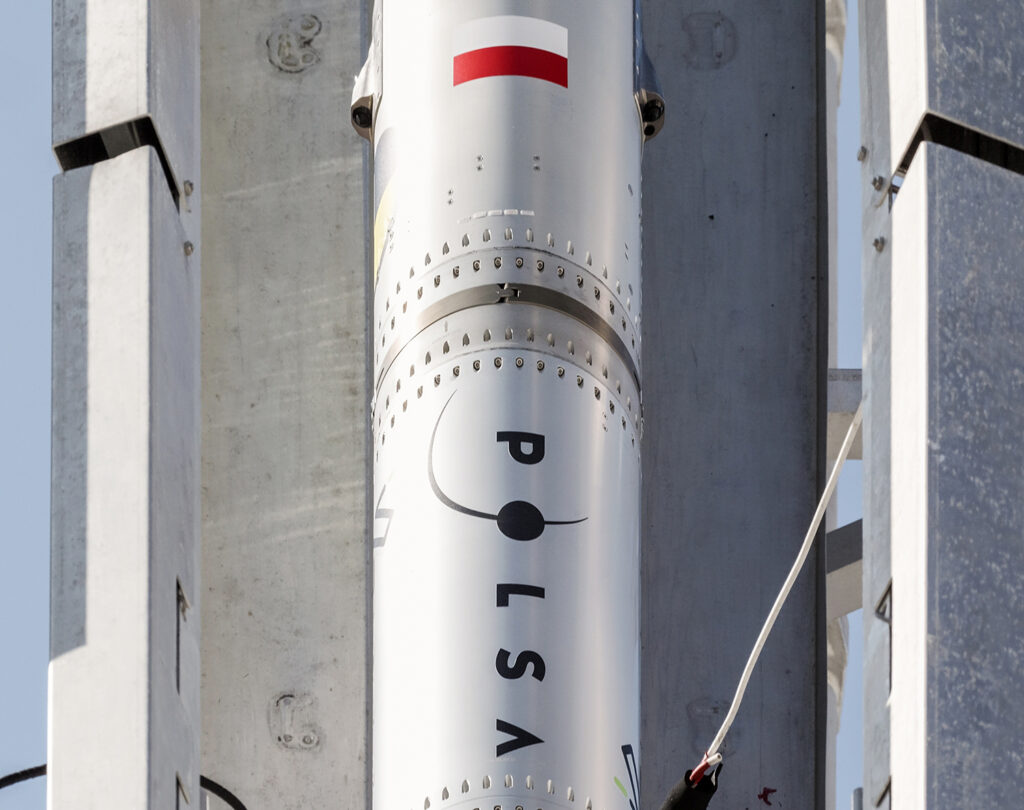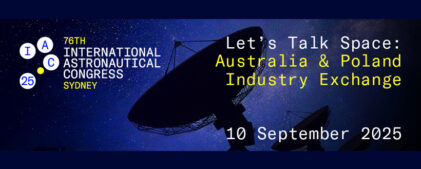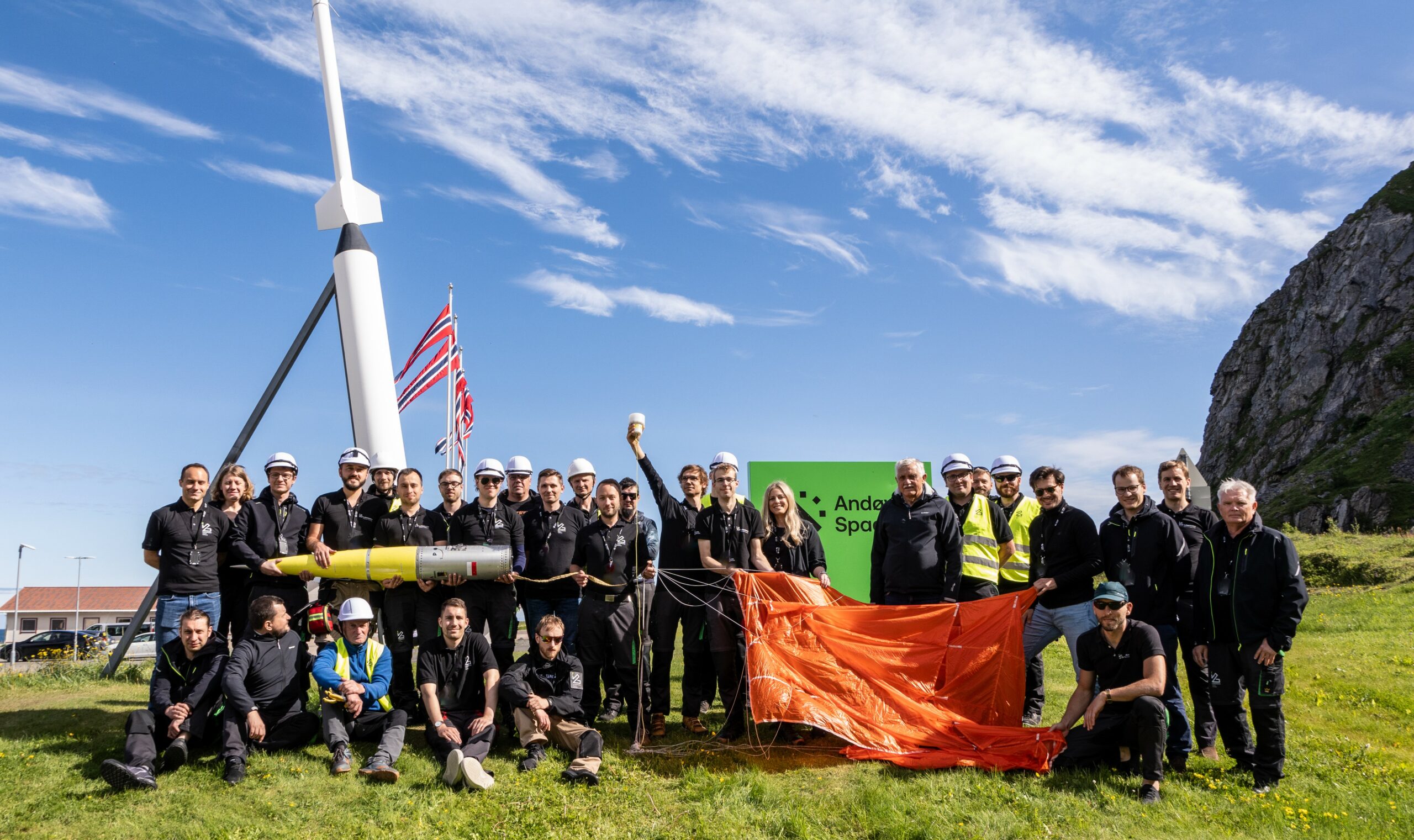Historical achievement of Polish engineers – Polish suborbital rocket ILR-33 AMBER 2K reached space
The world’s first rocket using 98% hydrogen peroxide as oxidizer achieved 101 km. 3 July 2024 will go down in the history of Polish achievements in the development of space technologies. The Polish Space Agency was involved in the project as a financial co-contributor.
Between June and July, engineers from the Łukasiewicz – Institute of Aviation completed a foreign launch campaign which’s aim was to prepare the Polish suborbital rocket ILR-33 AMBER 2K to fly to the edge of space. On 3 July 2024 at 13:09 PM took place their most recent successful test. The rocket, launched from the Andøya Space Sub-Orbital in Norway, reached an altitude of 101 km.

“We are proud of the fact, that a project of creating Polish suborbital rocket, inaugurated of the late professor Piotr Wolański, in which hydrogen peroxide with a concentration of 98% was used as a rocket propellant, celebrates international success. Reaching an altitude of 101 km by ILR-33 AMBER 2K is a breakthrough event in the history of Polish science and the achievements of Polish engineers in the field of space technologies. With this result, we have proven that scientists from our Institute can find a niche, create and implement breakthrough technologies, and that they are pioneers in bringing elements of sustainable development to space”, said Dr. Eng. Paweł Stężycki, director of the Łukasiewicz – Institute of Aviation.
The ceiling of 101 km is the result of systematic improvements that the Institute’s engineers have implemented since previous rocket launches. AMBER 2K upgrades include enlarged solid rocket boosters, a main stage hybrid motor with extended operating duration and extensive launch infrastructure (WR-2 mobile suborbital rocket launcher). Additionally, the organization of flights was improved and adapted to the requirements of the foreign test site.

“Thanks to the tests in Norway, we have proven that the ILR-33 AMBER 2K rocket is a complete and mature technical solution. The consistent implementation of the AMBER program means that today we have qualified staff and research facilities necessary to develop complex space systems, not just components or subsystems. In Poland, it is possible to develop a launch vehicle that would allow carrying small satellites into low Earth orbit. Thus, Polish satellites could be launched using a domestic system, providing us with independent access to orbit. This is extremely important in terms of the growing role of satellite data in both civilian and military applications”, says Dr. Eng. Adam Okniński, director of the Space Technologies Center at Łukasiewicz – Institute of Aviation.
Almost 2000 kilometers from Warsaw
The organization of a foreign space mission took half a year which was an ambitious challenge. The team of engineers and scientists from Łukasiewicz – Institute of Aviation was not only responsible for preparing the suborbital rocket for a foreign mission, but also for selecting the launch site and preparation of the logistics of the campaign. After a detailed analysis, it was decided that the tests would take place in Norway. We are talking about Andøya Space located almost 2,000 km from Warsaw, where Łukasiewicz – Institute of Aviation is based. Conducting flight tests was possible thanks to cooperation with Polish Space Agency, Ministry of National Defence, Ministry of Science and Higher Education, Ministry of Economic Development and Technology, Ministry of Foreign Affairs and Łukasiewicz – Industrial Organic Chemistry.
“Organizing all logistics required transporting not only the ILR-33 AMBER 2K rocket, which is a technology demonstrator, but also the WR-2 mobile launcher, avionics systems, infrastructure supporting facility integration and propellants. It was necessary to obtain appropriate export permits and provide safe, specialized transport” – concludes MSc. Eng. Michał Pakosz, head of Rocket Technology Department and head of the ILR-33 AMBER 2K program.

It’s worth knowing that
All design work related to the development of the ILR-33 AMBER 2K suborbital rocket was carried out by Łukasiewicz – Institute of Aviation. The ILR-33 AMBER 2K is a complete system developed on the basis of space standards. It is the world’s first rocket to use one of the most ecological propellants, i.e. hydrogen peroxide with a concentration of 98%+. We come into contact with hydrogen peroxide in our everyday lives, although in much lower concentrations. An example is hydrogen peroxide (3% concentration) or perhydrol used in the chemical industry for i.e. fabric bleaching (30% concentration). While hydrogen peroxide was used in rocket technologies several dozen years ago, the technology at that time did not allow for long-term missions which limited the scope of its use. The solution developed at the Łukasiewicz – Institute of Aviation gives prospects for the application of propellant also in satellite platforms and other long-term space missions.
Source: Łukasiewicz – Institute of Aviation, Polish Space Agency







 Back
Back






